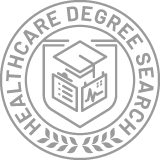Associate Degrees in Health Aids/Attendants/Orderlies
Education Levels of Health Aids Majors
During the most recent year for which data is available, 15 people earned their associate degree in health aids. This makes it the 21st most popular associate degree program in the country.
The following table shows the number of diplomas awarded in health aids at each degree level.
| Education Level | Number of Grads |
|---|---|
| Basic Certificate | 2,103 |
| Undergraduate Certificate | 126 |
| Associate Degree | 15 |
Earnings of Health Aids Majors With Associate Degrees
We are unable to calculate the median earnings for health aids majors with their associate degree due to lack of data.
Student Debt
We do not have the data to estimate the median debt for this class of people.
Student Diversity
More women than men pursue their associate degree in health aids. About 100.0% of graduates with this degree are female.
| Gender | Number of Grads |
|---|---|
| Men | 0 |
| Women | 15 |

The racial-ethnic distribution of health aids associate degree students is as follows:
| Race/Ethnicity | Number of Grads |
|---|---|
| Asian | 0 |
| Black or African American | 1 |
| Hispanic or Latino | 2 |
| White | 12 |
| International Students | 0 |
| Other Races/Ethnicities | 0 |

Most Popular Health Aids Programs for Associate Degrees
There are 8 colleges that offer an associate degree in health aids. Learn more about the most popular 8 below:
The most popular school in the United States for health aids students seekingan associate degree is Southern West Virginia Community and Technical College. During the most recent year for which we have data, 26 people received their associate degree in health aids from Southern.
Mesalands Community College comes in at #2 on our list of the most popular colleges offering associate degrees in health aids. During the most recent year for which we have data, 3 people received their associate degree in health aids from Mesalands Community College. About 100% of this group were women, and 100% were students from an underrepresented racial-ethnic group.
Highline College comes in at #4 on our list of the most popular colleges offering associate degrees in health aids. During the most recent year for which we have data, 1 people received their associate degree in health aids from Highline. About 100% of this group were women, and 100% were students from an underrepresented racial-ethnic group.
Health Aids Concentrations
| Major | Annual Degrees Awarded |
|---|---|
| Health Aide | 14 |
| Home Health Aide | 1 |
Explore Major by State
Alabama
Arkansas
Connecticut
Florida
Idaho
Iowa
Louisiana
Massachusetts
Mississippi
Nebraska
New Jersey
North Carolina
Oklahoma
Rhode Island
Tennessee
Vermont
West Virginia
Related Majors
Below are some popular majors that are similar to health aids that offer associate degrees.
| Major | Annual Degrees Awarded |
|---|---|
| Nursing | 82,967 |
| Allied Health Professions | 29,240 |
| Health/Medical Admin Services | 17,166 |
| Allied Health Services | 16,805 |
| Health Sciences & Services | 10,346 |
References
*The racial-ethnic minority student count is calculated by taking the total number of students and subtracting white students, international students, and students whose race/ethnicity was unknown. This number is then divided by the total number of students at the school to obtain the percentage of racial-ethnic minorities.
More about our data sources and methodologies.

